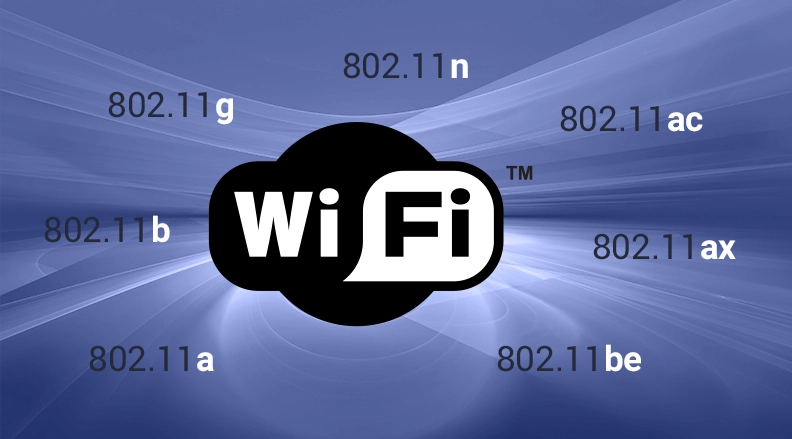In today’s world, Wi-Fi is as essential as electricity for our daily lives. It has revolutionized the way we connect, communicate, and access information. But have you ever wondered how this indispensable technology evolved? From its humble beginnings as 802.11 in 1997 to the advanced Wi-Fi 7 on the horizon, here are some advancements.
802.11 (Wi-Fi)
- Release Year: 1997
- Frequency: 2.4 GHz
- Max Data Rate: 2 Mbps
- Advancements: Introduced wireless networking.
802.11b (Wi-Fi 1)
- Release Year: 1999
- Frequency: 2.4 GHz
- Max Data Rate: 11 Mbps (real-world throughput around 6 Mbps)
- Advancements: First mainstream Wi-Fi standard, good wall penetration, suitable for home and small office use, compatible with later g networks.
802.11a (Wi-Fi 2)
- Release Year: 1999
- Frequency: 5 GHz
- Max Data Rate: 54 Mbps
- Advancements: Operated in a less congested 5 GHz band, faster than 802.11b but with a shorter range, suitable for multimedia streaming and enterprise networks.
802.11g (Wi-Fi 3)
- Release Year: 2003
- Frequency: 2.4 GHz
- Max Data Rate: 54 Mbps
- Advancements: Backward compatibility with 802.11b, faster speed, enabled efficient web browsing, file sharing, and video streaming, similar range capabilities to 802.11b.
802.11n (Wi-Fi 4)
- Release Year: 2009
- Frequency: 2.4/5 GHz
- Max Data Rate: Up to 600 Mbps
- Advancements: MIMO technology for multiple antenna usage, flexible frequency band usage, suitable for high-bandwidth applications like HD video streaming and online gaming, and dominant Wi-Fi standard for its time.
802.11ac (Wi-Fi 5)
- Release Year: 2013
- Frequency: 5 GHz
- Max Data Rate: Up to 6933 Mbps
- Advancements: Wider channels, multiple MIMO streams, beamforming technology, significantly higher data rates, ideal for 4K video streaming, online gaming, and large file transfers, primarily operating in the 5 GHz band.
802.11ax (Wi-Fi 6)
- Release Year: 2019
- Frequency: 2.4/5/6 GHz
- Max Data Rate: Up to 9608 Mbps
- Advancements: Wi-Fi 6, or 802.11ax, represents a significant leap in efficiency and performance over its predecessors. It operates across 2.4, 5, and 6 GHz bands, offering up to 9608 Mbps data rates. Its efficiency is notable in crowded environments, making it 300% more efficient than 802.11ac. With technologies like OFDMA and MU-MIMO, Wi-Fi 6 excels in supporting multiple devices and reducing latency. For a deeper understanding of how these tech advancements work and the benefits they bring to Wi-Fi 6 and it's users, check out this blog post on Wi-Fi 6 benefits.
802.11ax (Wi-Fi 6E)
- Release Year: 2020
- Frequency: 6 GHz
- Max Data Rate: Up to 9608 Mbps
- Advancements: Extended Wi-Fi 6 standard to 6 GHz band, more channels without overlap, ideal for AR, VR, and high-resolution streaming, less congested for improved speed and reliability.
802.11be (Wi-Fi 7)
- Release Year: Expected in 2024
- Frequency: 2.4/5/6 GHz
- Max Data Rate: Up to 46 Gbits
- Advancements: Extremely High Throughput (EHT), faster data transfer rates, improved reliability, and lower latency, building upon Wi-Fi 6 foundations, aim for further advancements in wireless connectivity.
Each iteration of the Wi-Fi standards has significantly contributed to enhancing wireless networking capabilities, offering faster speeds, greater ranges, and more efficient performance, especially in crowded environments and for high-bandwidth applications. Wi-Fi continues to evolve, with future standards expected to offer even more remarkable improvements in wireless communication.




